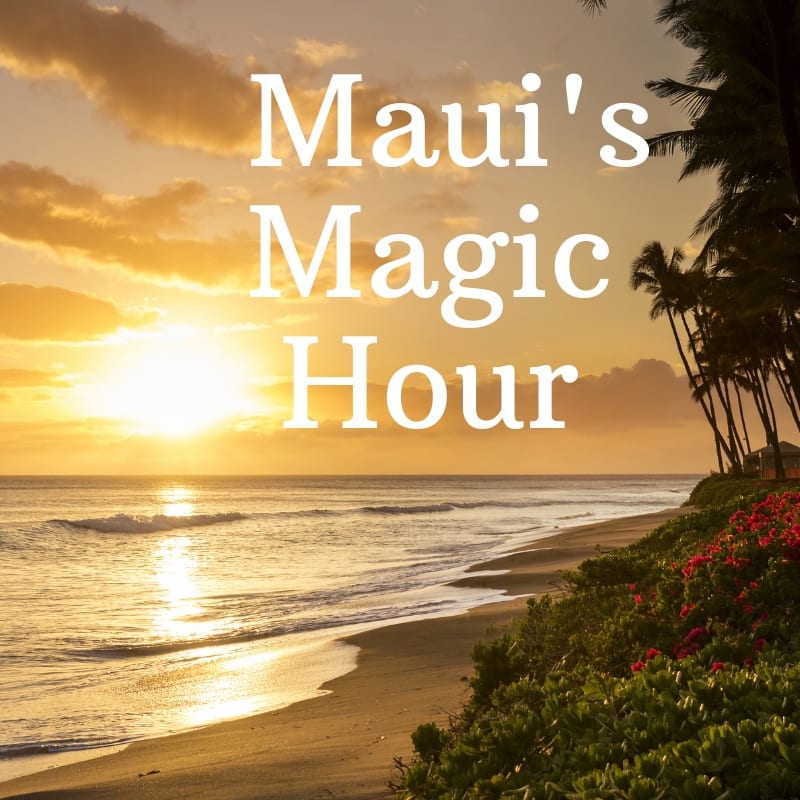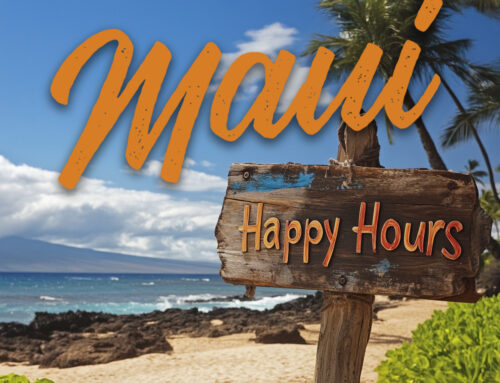Cameras are incredible aren’t they? They’re built to capture one single organic moment that ends up creating a memory of a lifetime and let’s hope they turn out better than what you expected. Besides you’re living this remarkable memory. You’re relaxed as you can be, your body has been kissed by the sun…and your days are just waiting for you to capture the moment you love!
The secret to capture the best shot is when the evening golden light appears an hour after sunrise and an hour before sunset that landscape photographers always like to call the “magic hour”.
Whether you’re an amateur or pro here’s a few sunset photography secrets that will capture the incredible magic hour of Maui.
About Shooting into the Sun
1) When you move the sunlight away from the lens, your environment takes on shape because you now have a combination of both light and shadow. That’s the trick to the best landscape and environmental photographs, the perfect balance of light and shadow with the sun behind their backs.
2) Learn your camera system so you can shoot as under exposed as possible while still keeping visible information in your shadows.
3) Keep your lenses clean of dust and dirt because it’s more likely to be visible in the photograph with this type of lighting.
4) Use the sun flare to add depth to the image.
5) Experiment with fixed lenses that have fewer elements and are less susceptible to lens flare.
These tips were found from National Geographic action photographer Tim Kemples http://adventureblog.nationalgeographic.com/2013/06/18/photographer-tim-kemples-shooting-tips-shoot-into-the-sun-2-of-3/
Exposure Setup
1) Set your Camera to the manual mode. (M)
Start with setting desired ISO. When you change your ISO setting, you’re adjusting your camera’s sensitivity to light. ISO settings can be anywhere from 24 to 6,400 (or higher), and these numbers have a direct relationship with the device’s sensitivity, so a lower setting makes it less sensitive and a high setting makes it more.
The lower the ISO the lower the noise/ grain in your image. If you desire smooth look set your camera to ISO 100. And if you are going for grainy look set to 800 or 1600.
2) Set up your F-stop. F-stop on the camera, modifies the shutter speed. When photographing a sunset use your aperture or F-stop will control the depth of field.
For Example: F11-22 will ensure the focus edge to edge. While F5.6 to F2.8 will allow you to have selective focus.
When using the sunset as a backdrop for your subject you might like to have the subject (person, silhouette, rock, boat etc..) in focus and let the sky go blurry. Once you have made a conscious decision about ISO and the F-stop it’s time to control the intensity of the sun.
3) Shutter speed. Increase Shutter speed with decrease that will set up the intensity of the light and will increase vividness of the sunset. Try overriding your light meter by a full stop or two and experiment until you get desired exposure. As the only control you use is the shutter speed this will be a quick task.
If photographing people during sunset you want to be at 1/60 sec and above to avoid motion blur, also if photographing people during the sunset you might want consider using off-camera flash as well.
When photographing on the beach try using a neutral density filter (or polarizing filter as it will knock off a stop) and lower your shutter speed to 1/15 sec. So the waves will produce a dreamy water effect
These tips were found on http://learnmyshot.com/sunset-photography-settings-and-tips/
Now that your ready..we recommend taking your camera passion skills to a few good spots.
South Side Kihei, Wailea, Makena
Makena Cove
Makena Hidden Beach
Keawakapu Beach
Ulua Beach
West Side Lahaina
Lahaina Harbor
Kapalua Bay
Ukumehame Beach
Top of Haleakala
Choose your spot.
End of the day, embrace the moment with or without a camera.







